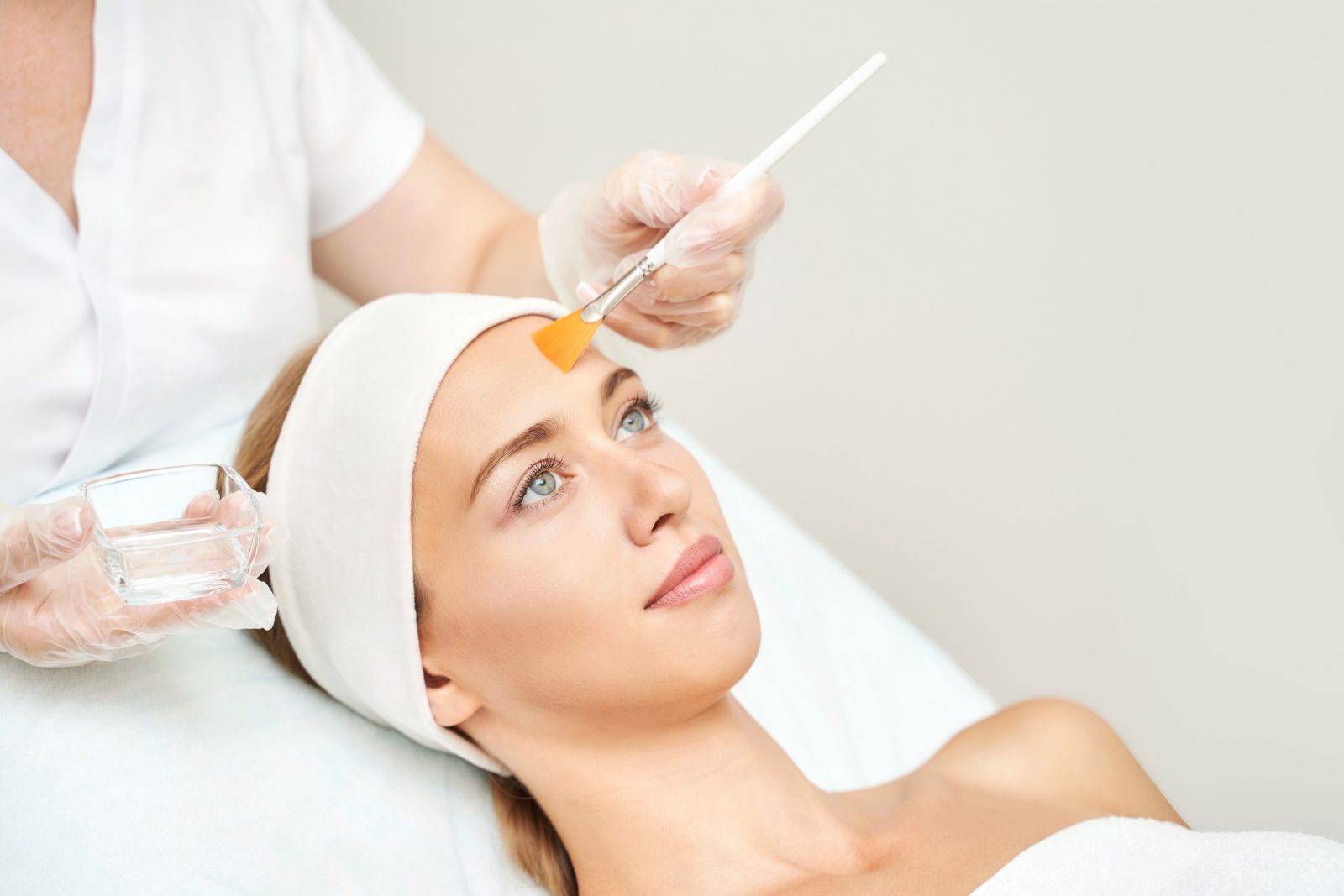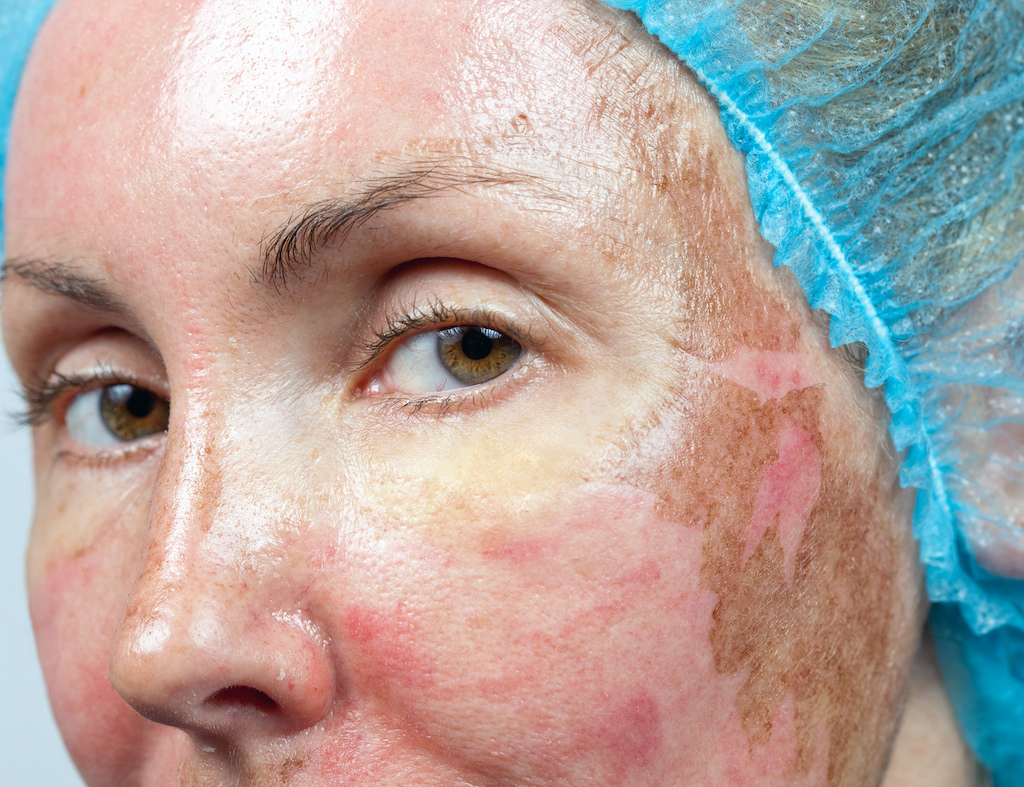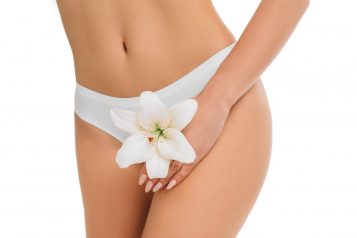Mara C. Weinstein Velez, M.D., FAAD is a board-certified dermatologist, and Director of Cosmetics and Laser Surgery at the University of Rochester Medical Center, in Upstate New York. She completed a prestigious Laser, Cosmetic and Dermatologic Surgery fellowship at SkinCare Physicians in Boston, with clinical faculty from the Harvard and Yale Departments of Dermatology and is one of the only Fellowship-trained Cosmetic and Laser Surgeons in Western NY.
 Photo Credit: Shutterstock
Photo Credit: Shutterstock
What are the capabilities of chemical peels? What are the side effects? Are there different kinds of chemical peels? Haute Beauty gets into a discussion with Haute Beauty expert Dr. Mara Weinstein Velez on medical grade chemical peels.
Haute Beauty: What is a chemical peel?
Dr. Mara Weinstein: To start, it’s important to note that there are different types of chemical peels. They are classified by their strength and depth of penetration. There are 3 categories: light or superficial, medium depth and deep chemical peels.
Each chemical peel has different mixtures of acids that we can apply to the skin to achieve a certain outcome. The correct peel to use depends on what the individual’s skin concerns are and the desired outcome. For instance, a chemical peel can be comprised of salicylic or glycolic acid. Salicylic acid peels are more appropriate for patients desiring treatment for active acid, oily skin, enlarged pores and even hyperpigmentation. Glycolic acid peels are great for light exfoliation, skin texture, hydration, and some uneven pigmentation. Each of these peels come in different strengths ranging from 2% to over 70%.
Over the counter or store-bought peels are often in the 2% salicylic acid range like Clean & Clear Face Wash or Acne Spot Treatments. 5% glycolic acid pads and washes can also be purchased online.
There is a fine line, however, when it comes to store bought versus in-office chemical peels.
At the Dermatologist’s office, 30% – 50% salicylic acid or 20%-70% glycolic acid can be used. Sometimes, you can find chemical peel products online with these higher acid percentages, dispensed through unverified vendors. They advertise the benefits but do not explain that these products are medical grade and should only be used by a trained physician. Therefore, it’s important to note what can go wrong with chemical peels when purchased online or when applied without proper training. With a stronger acid percentage, the peel will penetrate deeper, and more expertise is required!
HB: For the over counter chemical peels, have you seen patients whose skin reacted poorly to these treatments?
MW: Yes! Therefore, it’s extremely important to be aware of the percentage of acid in the chemical peel. Here’s where people get into trouble. I have seen patients who have ordered glycolic acid chemical peels online. Glycolic acid is unique, it can be very helpful, hydrating, and great for hyperpigmentation but when you use a higher percentage it can be detrimental to your skin. Why? The longer its left on the deeper it penetrates your skin and the more harm that can happen.
In the office when we use 70% acid, we’ll leave it on for around 1-3 minutes (depending on the individualized skin response). When using at-home chemical peels the lack of direction can cause things to go array. Your skin can suffer from:
- Chemical burn
- Skin peeling
- Uneven pigmentation
- Scarring
HB: In the case of chemical peel side effects, what can you do to reverse it?
MW: It’s all on a case-by-case scenario. In the instance where they are dealing with hyperpigmentation, I would do two things.
- Counsel the patient and prescribe the appropriate skincare regimen in addition to sunscreen. This could be a topical lightening agent or a combination of lightening agents.
- Based on the level of damage, skin type and scarring involved, I’d consider using resurfacing laser, which will remodel some of the scar tissue and promote normal wound healing.
 Photo Credit: Shutterstock
Photo Credit: Shutterstock
HB: If a patient comes into the office for a peel and their skin reacts poorly, what’s your next step?
MW: I would of course keep a close follow up on my patient to monitor symptoms. In general, the best thing to do is to keep the skin MOIST! If you are noticing any oozing, pus or a foul smell, reach out to your doctor as these can all be early signs if infection. Don’t be afraid to call your doctor with questions if something seems off. Waiting it out can be detrimental in some instances as early intervention is key to prevent scarring.
Use Aquaphor or Vaseline (bland emollients). These have a twofold purpose: prevent infection and seal in moisture.
If there are blisters do NOT pop them or pick at the skin. Let everything heal naturally!
HB: If a patient has sensitive skin, would you lower the percentage of the chemical peeling agent?
MW: For the first treatment, I’d choose a lower percentage depending on what we were trying to accomplish with the peel. If we are treating acne, I usually start with 30% salicylic acid. If we are treating hyperpigmentation, I might use TCA (trichloracetic acid) in a lower percentage. This is where the skill is required! You must monitor the skin’s response while the treatment is happening.
HB: Is there anything else you’d like to mention?
MW: I’ve seen patients with facial tattoos who have tried to use chemical peels to remove them resulting in horrific scarring. We must debunk this myth! Chemical peels can NOT remove tattoos. Do not use chemical peels to remove any skin tag, mole or wart. Seek professional help.
Have realistic expectations, especially if you aren’t going to a professional. Chemical peels cannot always help with acne scarring.
PSA: Know what your doctor, aesthetician or nurse is using on your skin. What type of chemical peel did they use? What percentage? It is so important to know what cosmetic procedure is being done. Document it. Write it down! Take control of your skincare.
For more information, visit Dr. Brian A. Levine's social media:

























